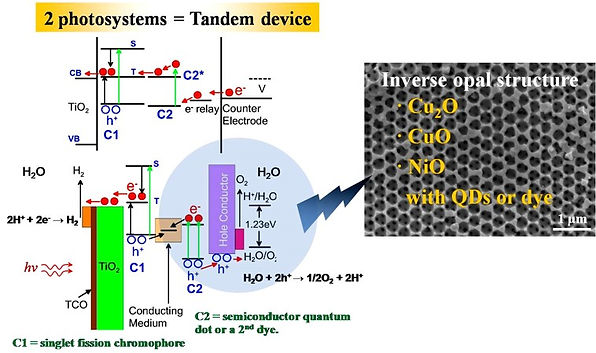
Photo & Electrochemical Energy Material Laboratory
Chonnam National University, Department of Chemistry Education / Interdisciplinary Program for Photonic Engineering
p-type solar cell
Several types of new concept solar cells are reported to increase the cell efficiency of traditional solar cells. Among them, tandem structure solar cells formed by putting together photoanode and photocathode have been widely interested for high efficient solar cells. However, the most of research have been concentrated on the photoanode (n-type semiconductors), while the research on the photocathode (p-type semiconductors) is insufficient. Accordingly, the research on the photocathode will be performed and it will provide the acquisition of core technology on the new concept solar cells and lead to technical advancement.
Our research is focused on the synthesis and discovery of p-type materials. p-type materials having suitable energy bandgap for photoelectrochemical device are rare. Also, the previous developed materials show the photocorrosion as a side reaction. Hence, the excellent nanomaterials based on NiO, CuxO, ZnTe will be developed by the electrochemical and chemical synthesis by the addition of another element. Also, to better the cell efficiency, stability issue related to photocorrosion of p-type materials should be solved through various approaches (doping, the formation of compound, control of surface states and so on.). Also, the search of new materials having suitable bandgap between the Fermi level of electrode material and the redox potential of electrolyte is required to increase the photovoltage. Above all, the discovery of optimum redox electrolyte should be investigated by controlling the composition and properties of redox electrolyte. This will result in the increase of both cell efficiency and stability. Furthermore, photocathode based solar cells show pretty low efficiency compared to that of photoanode based solar cells. The main reason is attributed to the side reaction (charge recombination). The research on the side reactions should be absolutely necessary. Consequently, the significant attention to unravel the relation between new materials/new concept and side reactions would be focused. As well, previous applied dye or quantum dots as a sensitizer to increase the cell efficiency will be employed for photoelectrochemical device.


